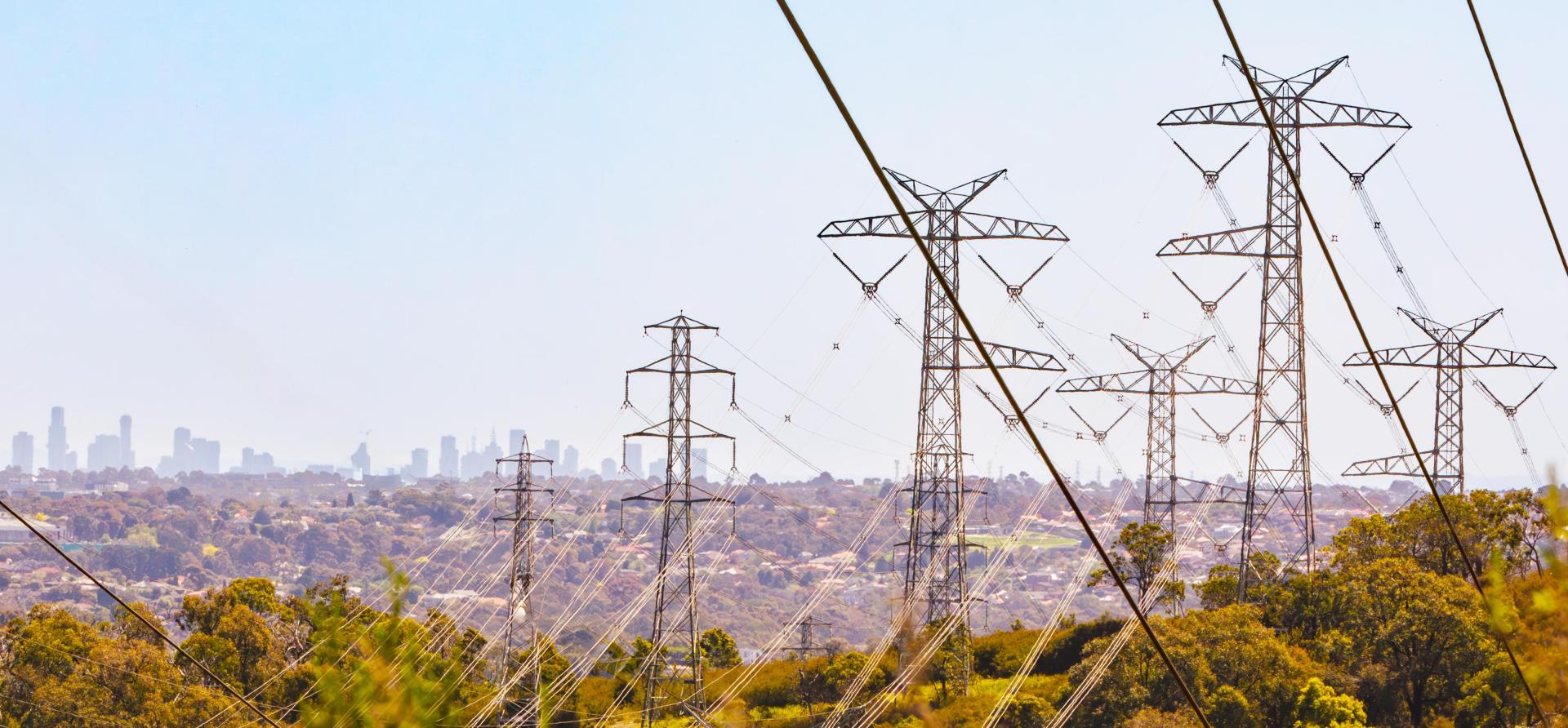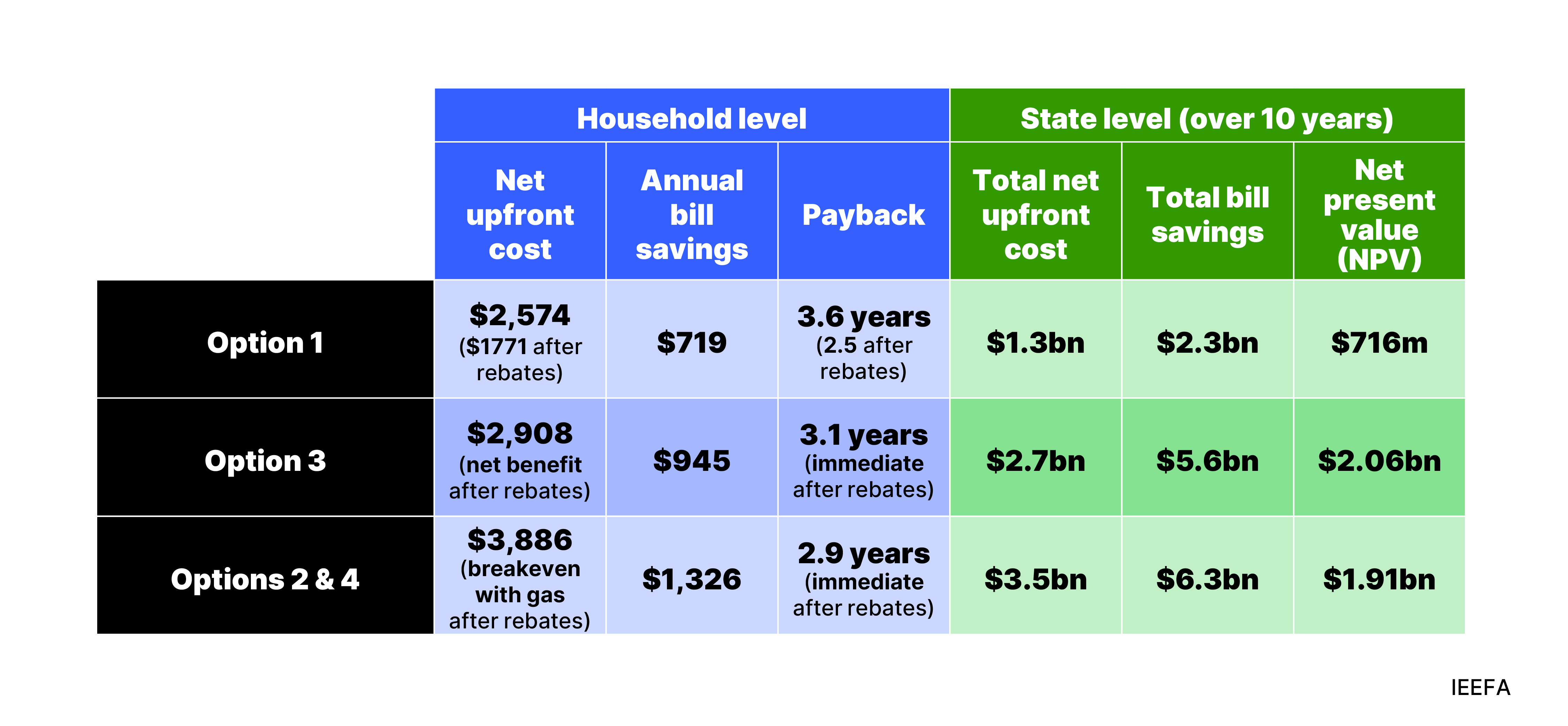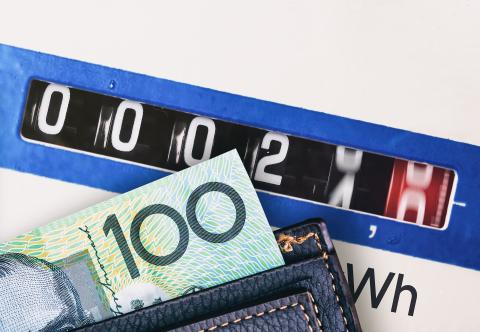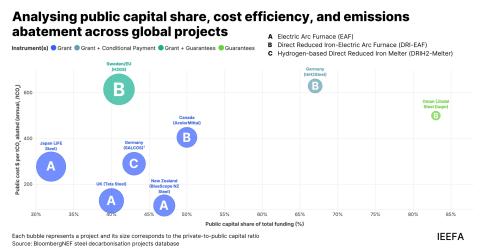Electrification regulations in Victoria would lower energy bills and reduce gas supply gaps
Download Briefing Note
View Press Release

Key Findings
Victorian households could save $6.3 billion over 10 years at a cost of $3.5 billion if all new and existing dwellings were electrified.
Excluding existing gas cooktops would reduce savings to households to $5.6 billion over 10 years at a cost of $2.7 billion.
If implemented by 2026, these measures could significantly lower the risk of near-term gas supply gaps.
Targeting only new residential dwellings offers the lowest benefits – $2.3 billion in energy bill savings over 10 years at a cost of $1.3 billion, with minimal impact on gas supply gaps.
Victoria’s pathways to all-electric homes could save households up to $6.3 billion in energy bills over 10 years, but will need to be implemented quickly to address gas supply gaps.
IEEFA analysed the four electrification options in the Victorian government’s recent Regulatory Impact Statement (RIS):
- Option 1: Electrification of all new residential and new commercial buildings.
- Option 2: Electrification of all new and existing residential buildings and all new and existing commercial buildings, excluding existing commercial kitchens.
- Option 3: Electrification of all new and existing residential buildings (excluding existing residential cooking) and all new commercial buildings.
- Option 4: Electrification of all new and existing residential buildings.
Household and statewide savings under Victoria’s proposed electrification options

Source: IEEFA analysis. Note: Options 2 and 4 were grouped together as they include the same residential requirements. Commercial electrification was not factored into this analysis.
IEEFA began analysing the financial case for electrifying Victorian households in 2023, and has produced updated modelling to assess the impacts of the proposed RIS options. Our research found that an existing home that switches all of its gas appliances to efficient electric alternatives once they wear out could save over $1,300/year. Efficient electric appliances will normally cost more, with the extra costs being recouped in about three years. However, most households will be eligible for government rebates and may find the efficient electric appliances are cheaper than staying with gas.
In addition, three of the four RIS options would reduce the impact of gas supply gaps forecast to hit Victoria from 2028, provided action is taken by 2026. While most supply-side solutions to address these gaps would result in higher costs to consumers, reducing gas demand through electrification is an obvious alternative that reduces consumer costs.
The Victorian government’s preferred approach, Option 3, would require all new residential buildings to be all-electric, and all existing gas appliances except for cooktops to be electrified at end of life. IEEFA’s analysis found this option would offer the highest net present value, and would deliver $5.6 billion in energy bill savings over 10 years.
However, Options 2 and 4, which include the requirement to electrify cooktops, were found to deliver the largest energy bill savings for consumers, $6.3 billion over 10 years, and this would accelerate as more consumers disconnect from the gas network. Option 1, which only targets electrification of new buildings, is the least impactful option.
Residential electrification remains the most attractive first step for Victoria to mitigate the impact of upcoming gas supply gaps. While all of Victoria’s proposed options have net benefits to consumers, our analysis found that electrification of existing homes is necessary to address gas supply gaps, and that households that can fully move away from fossil gas will save the most.
IEEFA recommends the Victoria government gives strong consideration to Options 2 and 4. Implementing Options 2 or 4 in 2026 could generate $6.3 billion in statewide energy bill savings in the first 10 years, at a cost of $3.5 billion. However, the savings accelerate in the longer term – reaching $39.5 billion by 2050 at a cost of $10.2 billion. Should the government pursue its preferred Option 3, it would also help reduce the potential impact of gas supply gaps.
However, any delay could put those benefits at risk. Regulations would need to start in 2026 to have the biggest impact on gas supply gaps, and the benefits are significantly degraded if regulations are delayed by as little as one year. Proposed regulations should be implemented in 2026 at the latest, to have the maximum near-term benefits on reducing gas supply gaps.
Prolonging Victoria’s dependence on gas increases the risks of additional network and infrastructure costs being passed onto consumers through higher energy bills. Electrification can unlock further potential savings for households through rooftop solar, load shifting, thermal efficiency upgrades and batteries.















